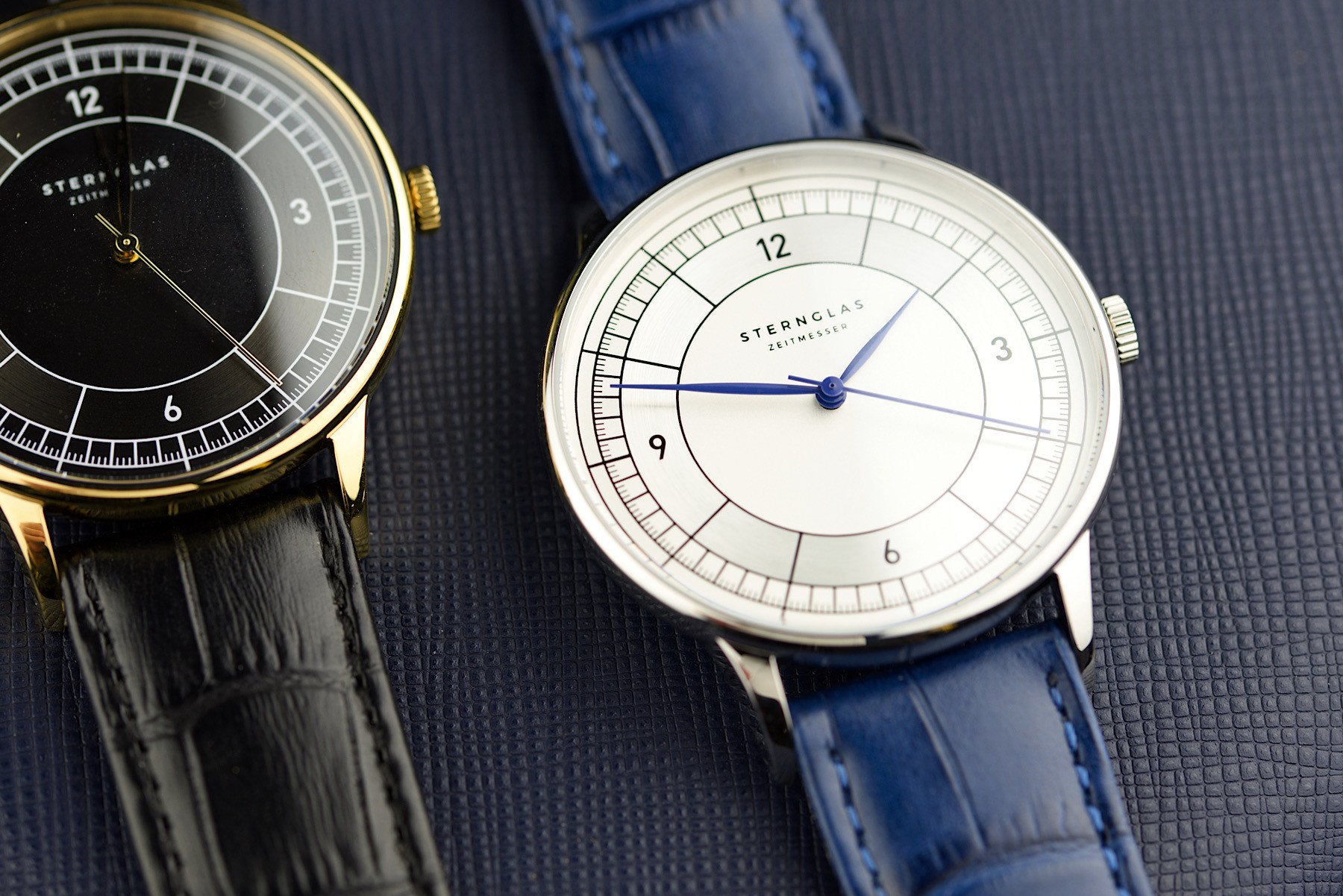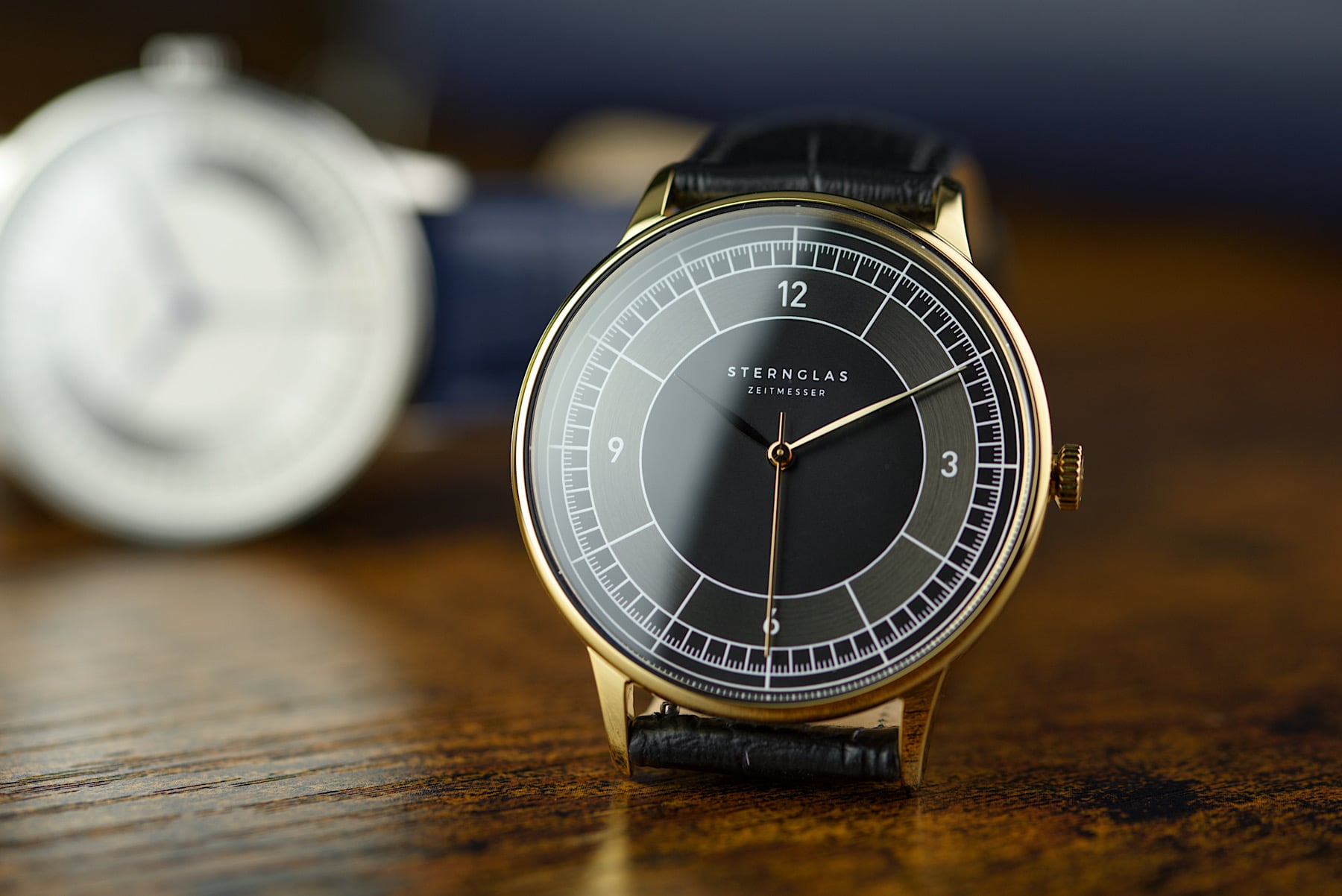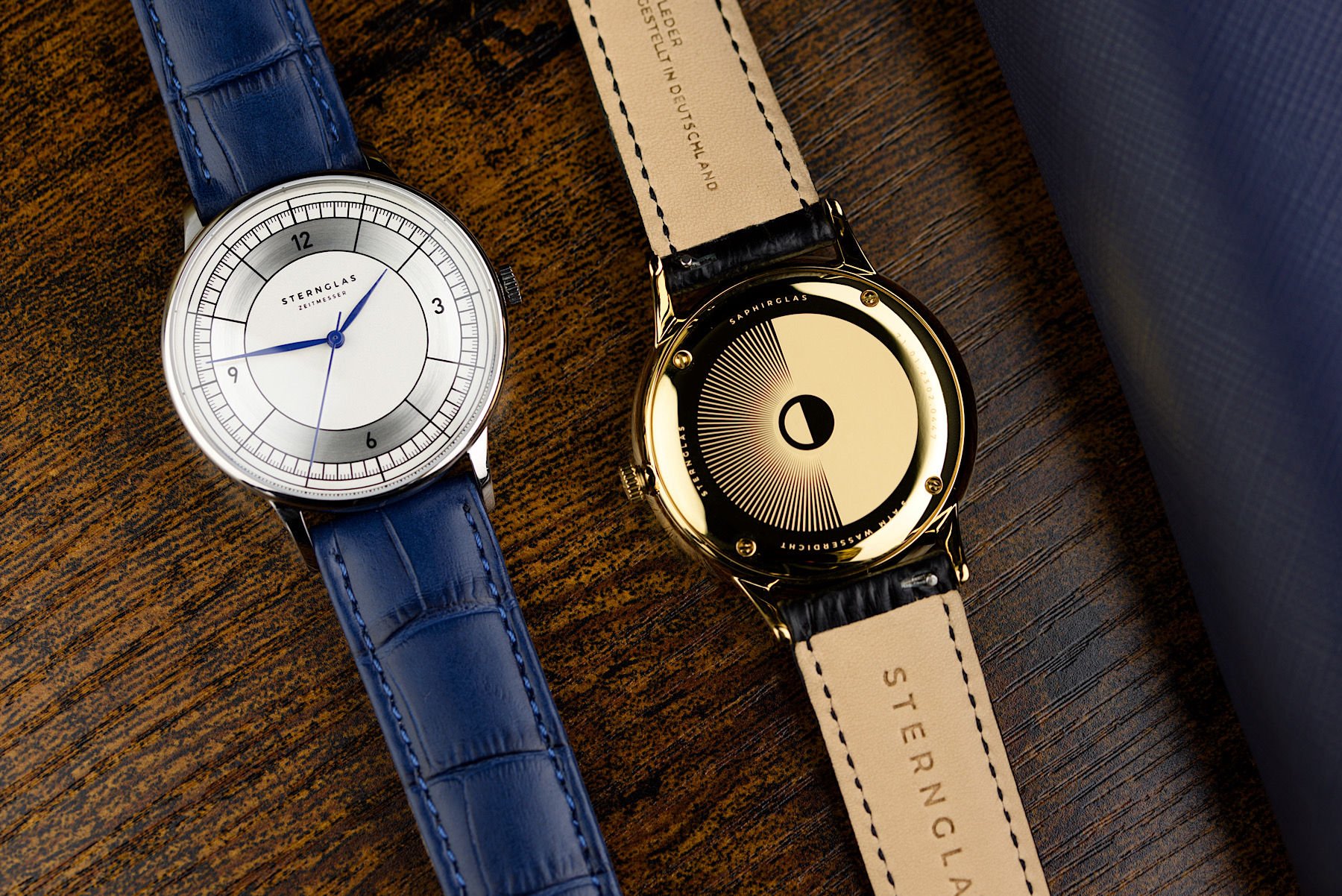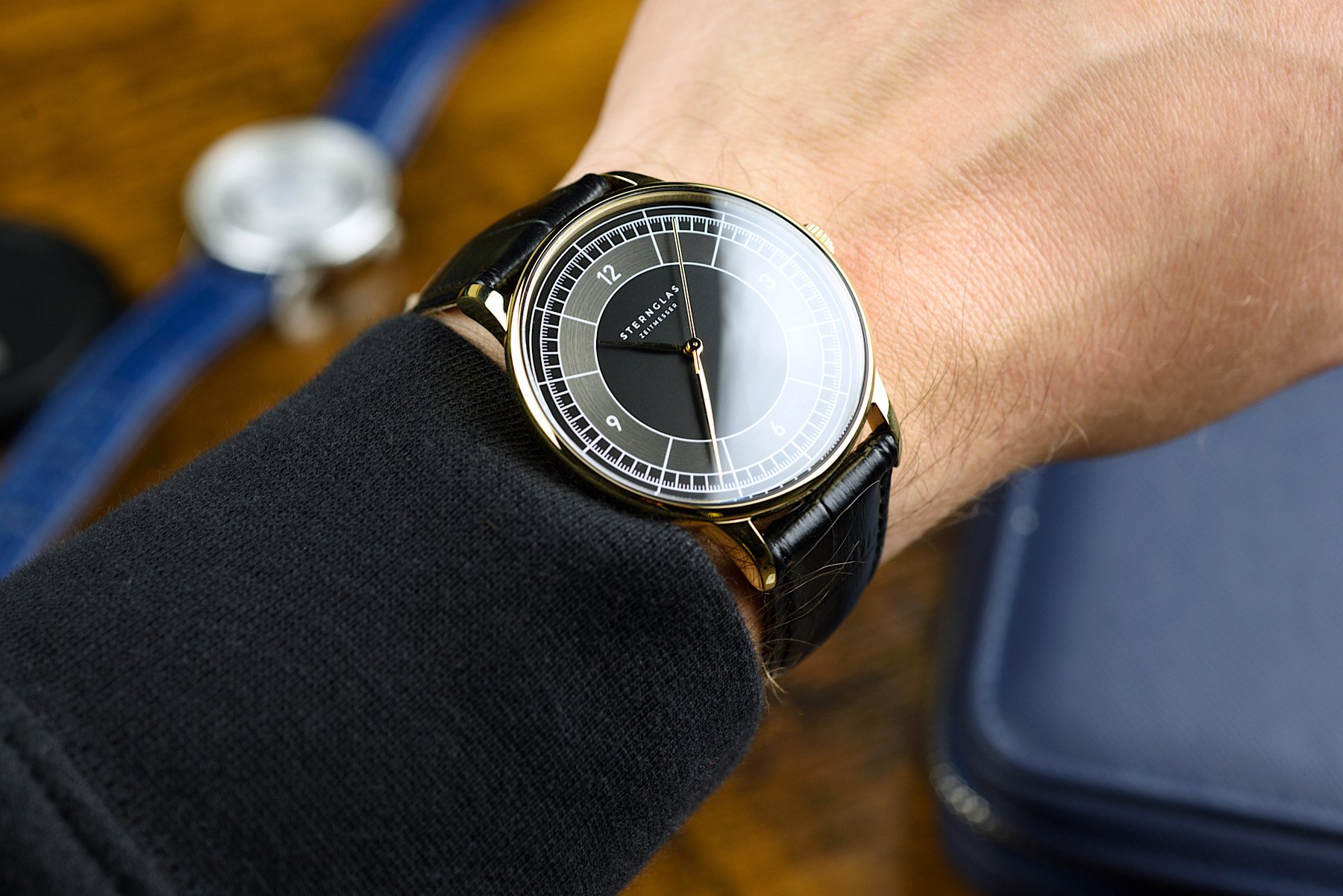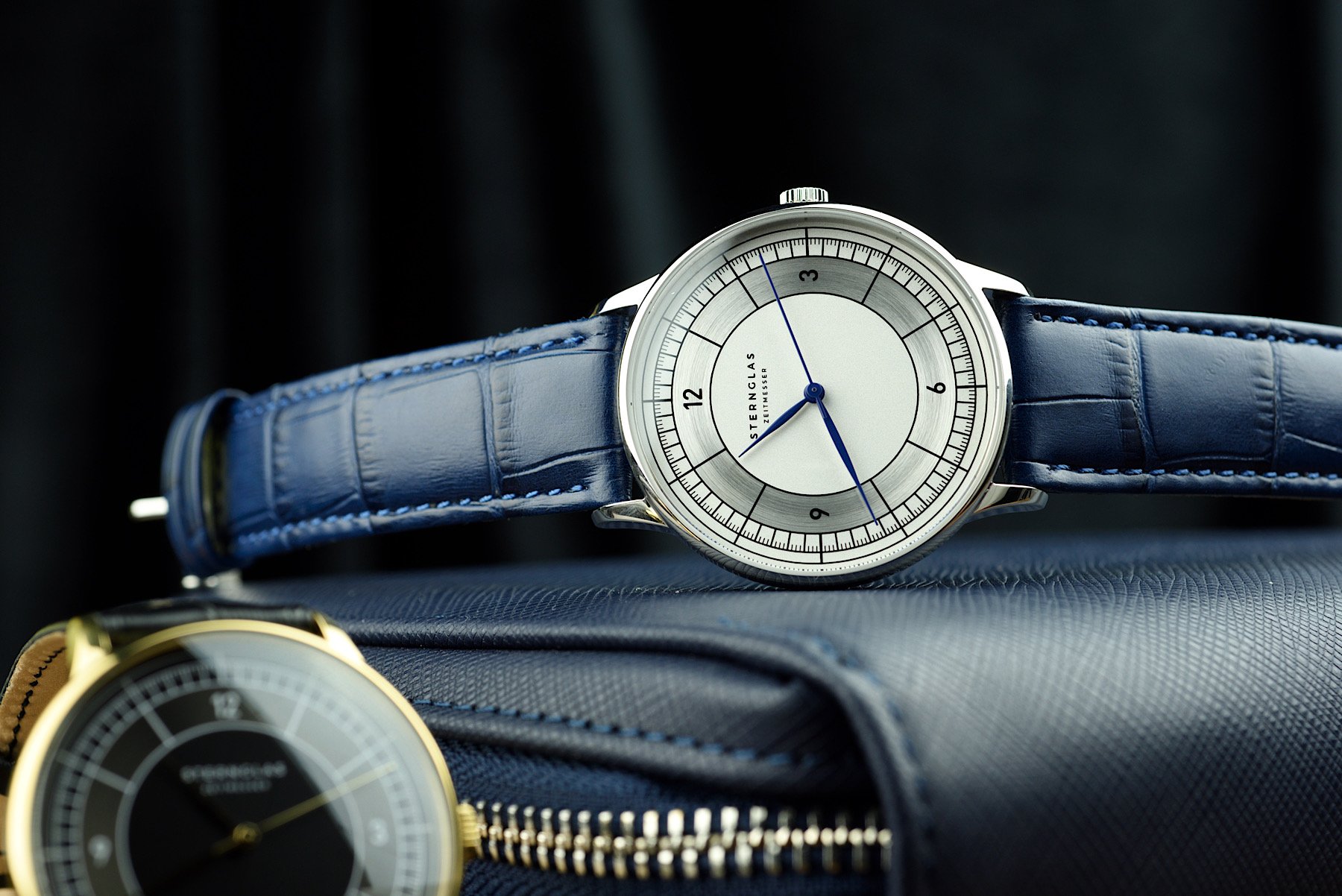Hands-On With The New Sternglas Sedius — An Affordable Art Deco/Bauhaus Crossover
Sternglas is back again, this time with a new release that taps into an elegant aesthetic. It’s one not often seen at the truly affordable end of the market. Externally, the Sedius is trimmed with leaf hands, a graceful case, and a shimmering sector dial. On the inside, a Seiko meca-quartz movement is a healthy compromise of accuracy, convenience, and dynamism. When also considering the price, the Sternglas Sedius has some serious appeal.
This model is described by Sternglas as “Bauhaus meets Art Deco.” My inference is that the brand, which often delivers the Bauhaus look successfully, is now trying its hand at Art Deco as I don’t see a lot of Bauhaus remaining in this design. The case back refers to both, but the shimmering sector dials and leaf hands play the Art Deco tune more strongly than anything else. If there are some of Sternglas’s regular Bauhaus cues still at play, they are largely drowned out.
Two beautiful sector dials
Two variants of the Sedius are available, each with a surprisingly distinct character. The case lines, dial layout, and hand shapes are the same on both. However, independent color combinations on each make more of a difference than I would have expected. What both watches share — and very successfully so — is the well-balanced dial. Experience tells me that a 40mm “all-dial” watch will look larger than it actually is. The 12 outer dashes, the minute track (subdivided into four ticks to match the beating of the meca-quartz movement), and the sectors housing the four numerals at the cardinal points are all cleverly proportioned. The dial is neither too busy nor too large or sparse.
This Sedius displays a color for the ages
I seem to be nearing a certain point in life where gold on a watch is becoming more agreeable. Of course, in such an affordable watch, there is no solid gold case or even gold plating here. Instead, there’s a gold-colored finish on the stainless steel beneath. Still, the contrast against the black dial gives off a sense of warmth and sophistication. It’s one that I hope to grow gracefully into myself. On this dial, the circular-brushed finish in one sector of the dial is most subtle, revealing a slight brown tint amplified by the gold’s warmth. Unfortunately, despite a double AR coating, the hands tend to get lost against the dial. Photographs exaggerate this effect (as might my aging eyes), but this is by far the less legible of the two Sedius models I’ve been looking at.
By contrast, the bright blue-on-white colorway is crisp and clear. The brushed silver sector is more prominent against the satin white background, and neither shade is so intense as to become cold. The blue leaf hands — painted rather than thermally treated — are perfect for the dial, being at their widest where the dial is sparse and tapering to a fine point when you read the time against the markings.
Meca-quartz in a dress watch?
There will always be debate among purists about what constitutes a dress watch. I could point out a few things here as easy pickings. However, I prefer to categorize a watch based on its likely usage. So for me, this is a dress watch to be worn with suitably formal garb. Such occasions don’t roll around too often, so having a watch that utilizes a quartz movement for the sake of entry-level price and maintenance cost makes sense.
I guess this is all a roundabout way of saying that I’m on board with Sternglas using a quartz movement in the Sedius. It might be better to do away with a seconds hand altogether. At least, that would bring it one step closer to a purist’s dress watch. Still, if one of the reasons to dislike quartz is the giveaway one-tick-per-second jumping of the seconds hand, then Seiko’s VH31 meca-quartz movement beating at four ticks per second is a reasonable compromise.
How the Sedius stacks up on the wrist
Although the dial is the most engaging and visible part of the watch, the case is essential in completing the Art Deco look. The slim bezel curves to a more substantial bowl-shaped case, leaving a smaller surface on the wrist. This shape, combined with the slender downturned lugs, further endorses the satisfying balance observed in the dial. The case back is etched with a motif symbolizing the marriage of Bauhaus and Art Deco. Additionally, the crown features the Sternglas logo.
I consider my 17.75cm (7″) wrists to be average. So anything slightly below 40mm in diameter generally works for me as a formal watch, and the Sedius offers no surprises in how it wears. The strap choices (black for the black dial, blue for the white dial) are sensible, though the leather is a little stiff initially. Neither watch variant would be challenging to match, and the 20mm lug spacing will open up a wide range of options.
Concluding thoughts on the Sternglas Sedius
Despite Sternglas’s description of Bauhaus meeting Art Deco, I only see one of those prominently on display. Still, the brand executes it very well. I’m still caught between two opposing thoughts regarding dress watches. Half of me believes that such a piece should be something exceptional. After all, it will be worn on special occasions, right? The other half recognizes that I only have a finite watch budget, the bulk of which should surely go towards watches that will see the most wrist time. To that part of me, the Sternglas Sedius makes perfect sense, especially at just €279. For more information, visit Sternglas.com.

